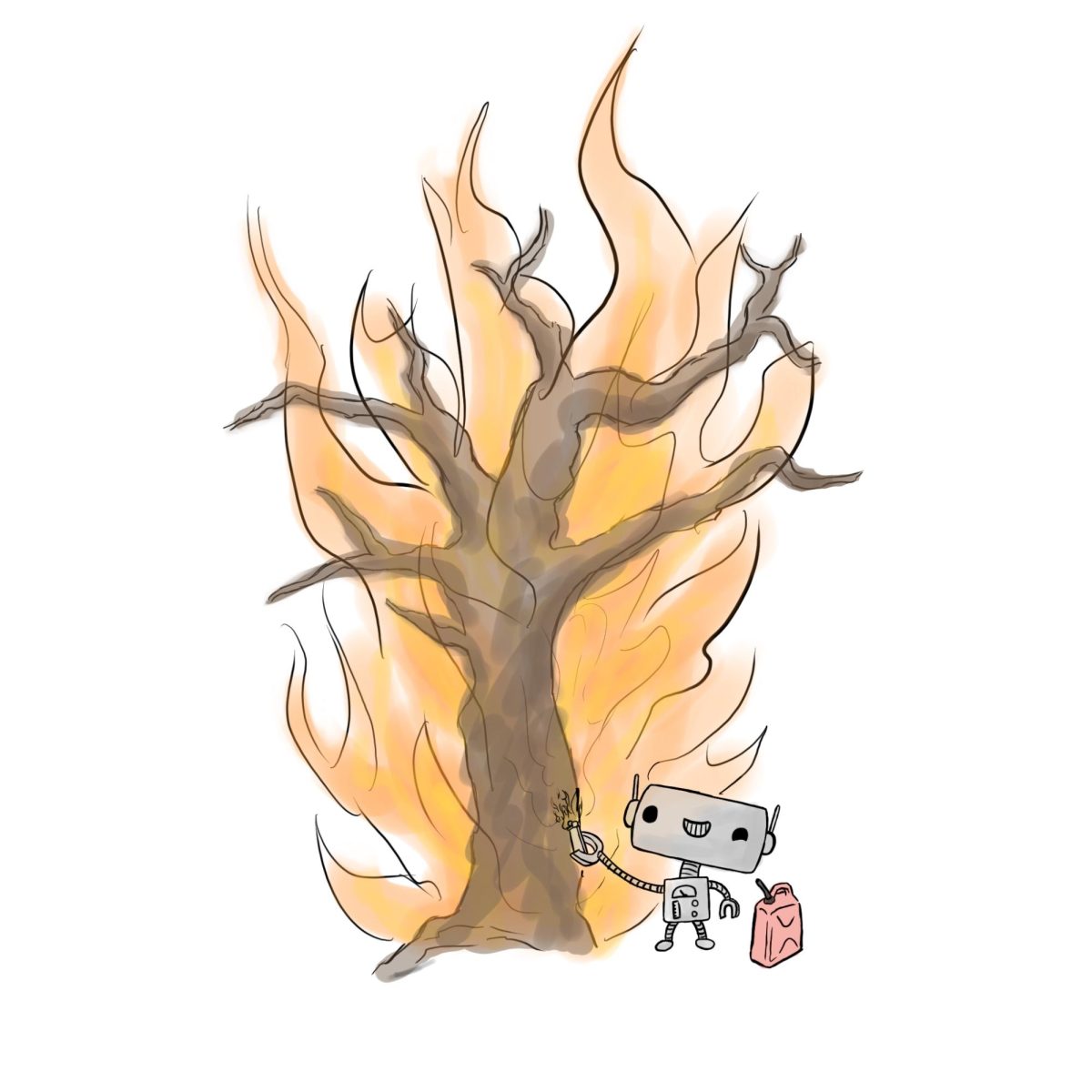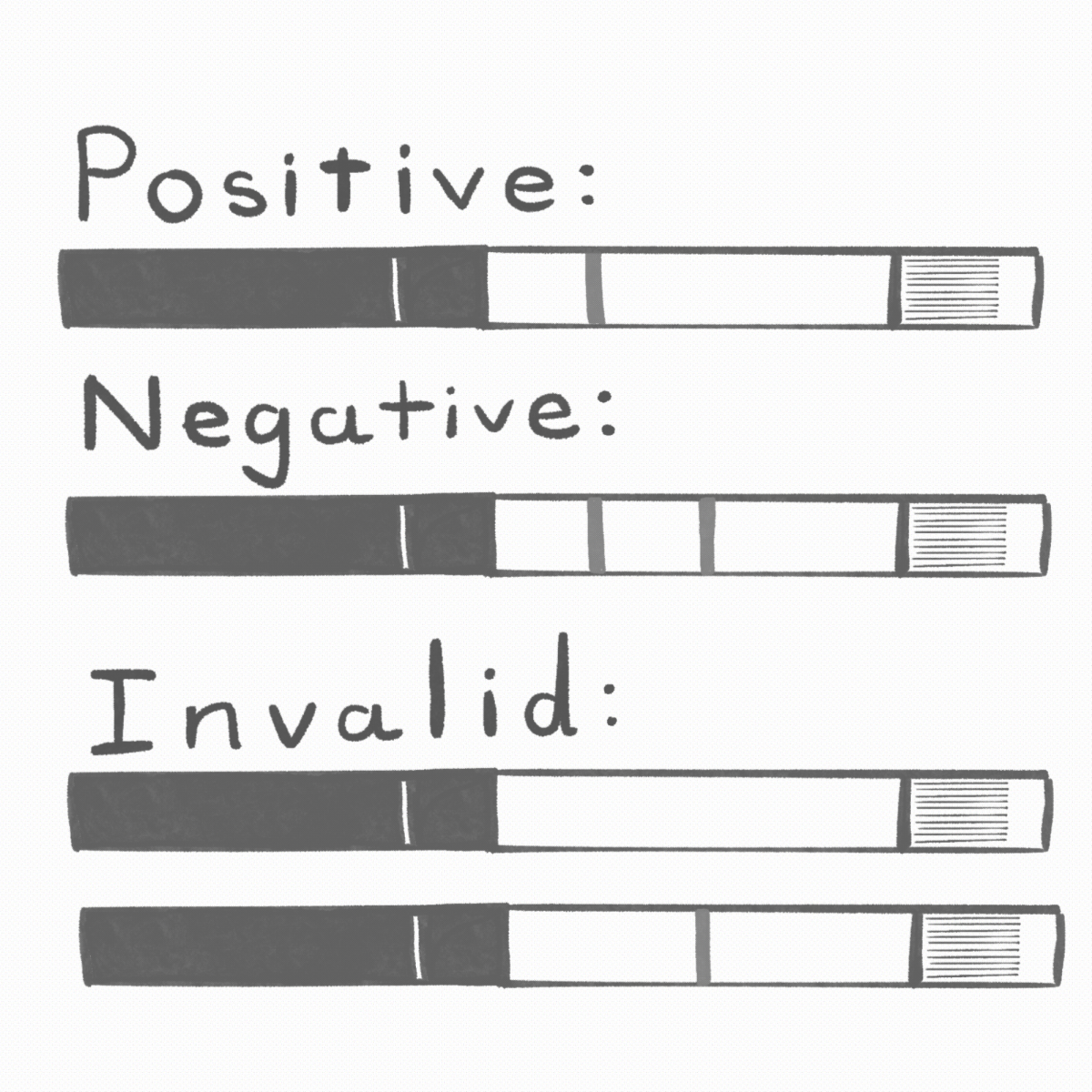Guest Column by Kelly Lyons, Michele Johnson, Troy Murphy, and David Ribble
The Trinitonian March 4 article “Four-legged Friends Find Home at Trinity” the efforts of the Cat Alliance at Trinity. As biologists who study the natural world, we aim here to offer a contrasting viewpoint on cat colonies. We understand the love for these very soft, purring creatures, particularly when students are missing their own pets. And how could you not love any animal named “Cuddle Slut” (true story, R.I.P.)? We suspect that, as scientists who have been vocal about our objection to free-roaming, domesticated cats, we may be among the “Cat Haters” referred to in the article. But it is for good reason that we do not love free-roaming, domesticated cats the same way that other humans in industrialized countries seem to.
Aldo Leopold once wrote that the more you learn about ecology and wildlife, the more you live in a “world of wounds.” We are intimately aware of the impact of cats on animals that unfortunately find themselves in cat-dominated, human-created environments. Indeed, we have watched the needless suffering, maiming and death heaped upon wild animals at the hands of free-roaming cats. Our goal is to expose you to the complexities of the “cat issue,” and to help you understand the intrinsic worth of the diversity of beautiful creatures on this planet. As such, we pride ourselves on being “Biodiversity Lovers.”
Domesticated, free-roaming cats are allowed the same, if not more, freedoms that humans experience, and their freedom impinges on the lives of many other creatures. Even when fully nourished, cats are highly motivated and capable predators and are responsible for widespread losses in urban and rural wildlife biodiversity. As a culture, we have long appreciated cats’ abilities as ratters; however, they are also indiscriminant hunters of small birds, lizards, mammals, and insects. Indeed, in a recently published study (Loss et al. 2013), researchers of the Smithsonian Conservation Biology Institute and the U.S. Fish and Wildlife Service, based on a large analysis across many studies, estimated that free-roaming cats in the United States kill 1.3 to 4 billion birds and 6.3 to 22.3 billion mammals annually. Thus, while cat lovers get to spend quality time with their favorite species, the rest of us watch our beloved biodiversity dwindle and enjoy the remaining urban wildlife that is either just unusually common or unusually good at avoiding being eaten (e.g., non-native sparrows, starlings and grackles).
The estimated numbers of cat-caused deaths are staggering. Even the low-end estimates are alarming. For field ecologists, the Loss et al. study confirms our observations of lack of biodiversity in urban areas. Their study also confirms over one hundred years of previous studies on the impact of free-roaming cats on islands. Islands are more susceptible to human-caused threats to wildlife, acting as “canaries in a coal mine” for conservation, and there are currently 83 campaigns globally to eradicate cats from islands (Campbell et al. 2011). This is particularly important for islands that have been designated for conservation or where ecotourism drives the economy; the Galapagos are, of course, a critically important location for cat control. And the success stories abound. For example, following cat eradication in 2013, the Ascension frigate bird returned to nest on Ascension Island for the first time in 150 years!
Domesticated cats are also exposed to dangers when free-roaming themselves. The two primary sources of danger are other free-roaming cats and disease. Felids evolved to live mostly solitary lives; they are lie and wait predators that defend territory for mates and food resources. Therefore their attacks on other cats are to be expected. Also, when cats roam freely and live in high density managed colonies they are more likely to be exposed to feline AIDS, rabies, cat scratch fever, feline leukemia and feline immunodeficiency virus among others (Viegas n.d.). Furthermore, parasites proliferate in feral cat colonies, including worms that extract essential nutrients and calories from cats, as well as ectoparasites, such as fleas, that cause unrelenting irritation. In addition, free-roaming cats are often injured by dogs or hit by cars. In sum, the vast majority of free roaming cats experience high levels of trauma, exist in subpar health conditions and experience painful death from injury, infection and malnutrition.
We face a significant problem in this country in managing free roaming cats. The problem starts when people dump pet cats that they no longer want. The standard reaction to homeless cat “dumping” is implementation of spay-neuter-return (SNR) programs and feeding stations. When SNR was first instituted across the country, it seemed like a good solution. The logic is that cats in these populations, assuming that all individuals are spayed or neutered, would not reproduce, would maintain their territories and when they died, the population eventually would disappear. Managed colonies, where cats are regularly fed and provided with basic medical care, are now widespread, even in parks (e.g., Brackenridge). An unintended consequence is that cats that have been “fixed” now lack the circulating hormones that cause territorial behavior and are unnaturally tolerant of other cats in their territory. This means that “fixed” cats are comfortable living in higher densities, requiring higher levels of food provisioning and causing even greater impact to the local wild animal populations.
We have seen no reasonable discussion by those who maintain colonies regarding consideration for other species, a long-term plan to reduce cat numbers. Why would they? They are essentially low maintenance pets. San Antonio has unusually large cat populations. This we attribute to our mild, and growing milder, South Texas climate and consistent failings of public policy. To make matters worse, the existence of managed colonies, where people can dump cats knowing that they will be cared for, facilitates an “easy way out” for pet owners who face hard decisions about unwanted pets. We suspect that managed colonies only perpetuate the problem of cat “dumping” by making it easy, for the general public and policymakers to continue avoiding the problem.
Because Trinity is a place of higher education with potential to set regional examples, it is important that we engage in an evidence-based dialogue and provide alternatives. Here in San Antonio, Dr. Kelly Lyons, as president of the Friends of San Antonio Natural Areas Board, has worked to negotiate restricted covenants with developers of apartment complexes around our Natural Areas require that all cats be walked on leashes and disallow any feeding stations. Restrictions such as these have been adopted by cities such as Madison, Wisconsin, where all cats must be on a leash or be picked up by city authorities. The American Veterinary Medical Association recommends not only that “owned cats be kept indoors, in an outdoor enclosure or on an attended leash,” but also recommends “prohibiting public feeding of intact free-roaming abandoned and feral cats” and “preventing establishment of managed cat colonies in wildlife-sensitive ecosystems.” We think that this policy is wise; however, urban areas could be rich wildlife ecosystems for everyone if we adopted policies that were more responsible for managing feral cat populations, “intact” or not.
People tell us, of course, that cats don’t like to be walked on leashes. Neither do dogs, but they get used to it. Think of it this way: if cats were a danger to us and our children in the way that dogs can be, would we allow them to roam freely? When dogs bite humans we generally do something about it, beyond just chucking rocks at them and hoping for the best. So why do we give cats more off-leash rights than dogs? This is because we are anthropocentric and cats do not pose a threat to humans in the way that dogs do. In the same way we fear dogs, small lizards, birds, mammals and insects fear cats.
Perhaps instead of being a leader of outdated policies that harm the environment, Trinity could provide leadership and guidance on these controversial issues. We need to face the problems that we have created and make tough decisions. Policies aimed at reducing populations of cats may seem inhumane, but doing nothing means that other animals are maimed and killed. And since we often do not see these predatory and torturous acts, we allow ourselves a comfortable cognitive dissonance in our complicity.
As a place to begin, Trinity Cat Alliance cats should be outfitted with anti-predation bibs or the like. They should also be kept in enclosures and walked regularly. In addition, they should not be allowed in the dorm rooms where they can transmit diseases or parasites like Toxoplasma gondii to students, or cause disruption to the lives of students who are allergic to cats.
Humans have created this problem and, as a result, we have lost millions of wild animals. As we face ethical decisions about maintaining cat colonies, we must include in the discussion the ethics of our decision to allow so many animals to suffer at the paws of these human-introduced predators. It is easy for us to assign names, and thus worth, to the cats, but we feel very strongly that the ethics of animal care extends beyond the cats to include the newly hatched baby birds begging loudly for an extra worm in the tree, the lizards doing pushups on the branch and the wild rodents scurrying to find enough food to supply its larder. We must afford the same rights and protection to other animals in our urban landscape or continue to live in ever-homogenizing ecosystems that diminish us mentally and physically. We need a Trinity Alliance that celebrates all biodiversity.
SOURCES
Loss, S.R. Will, T., Marra, P.P. 2013. The impact of free-ranging domestic cats on wildlife of the United States. Nature Communications 4: 1396.
Campbell, K.J., Harper, G., Algar, D., Hanson, C.C., Keitt, B.S., Robinson, S. 2011. Review of feral cat eradications on islands pp. 37-46 In Veitch, C.R., Clout, M.N., Towns, D.R. Island invasives: eradication and management. IUCN, Gland, Switzerland.
Viegas, J. N.D. The Dangers and Risks of Outdoor Cats.
(http://www.thedailycat.com/health/safety/outdoor_cat_dangers/)






